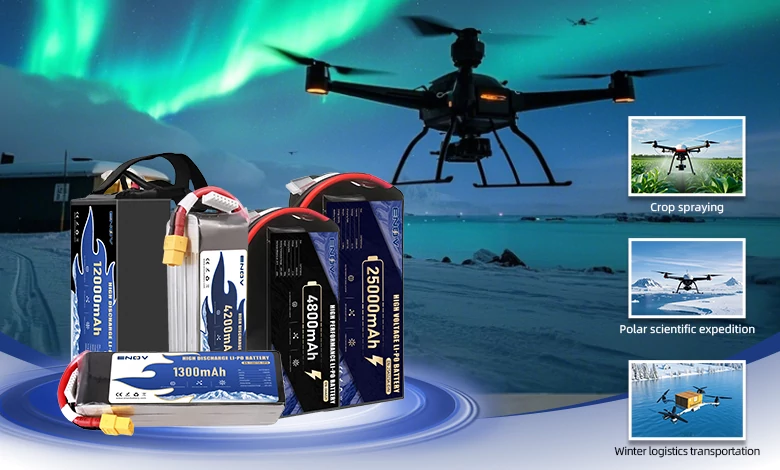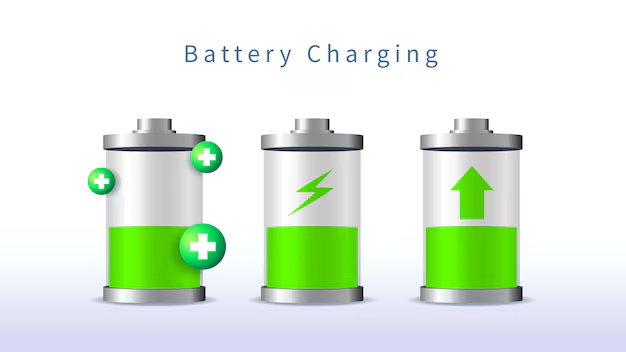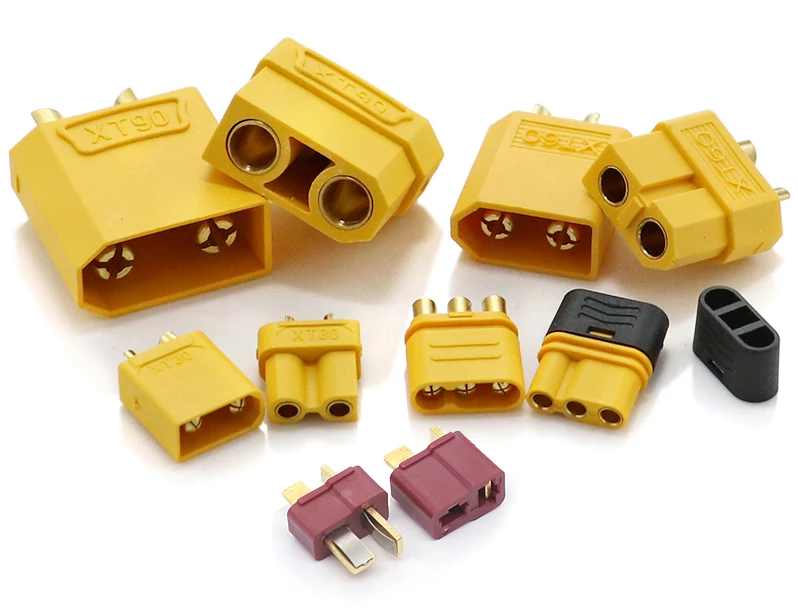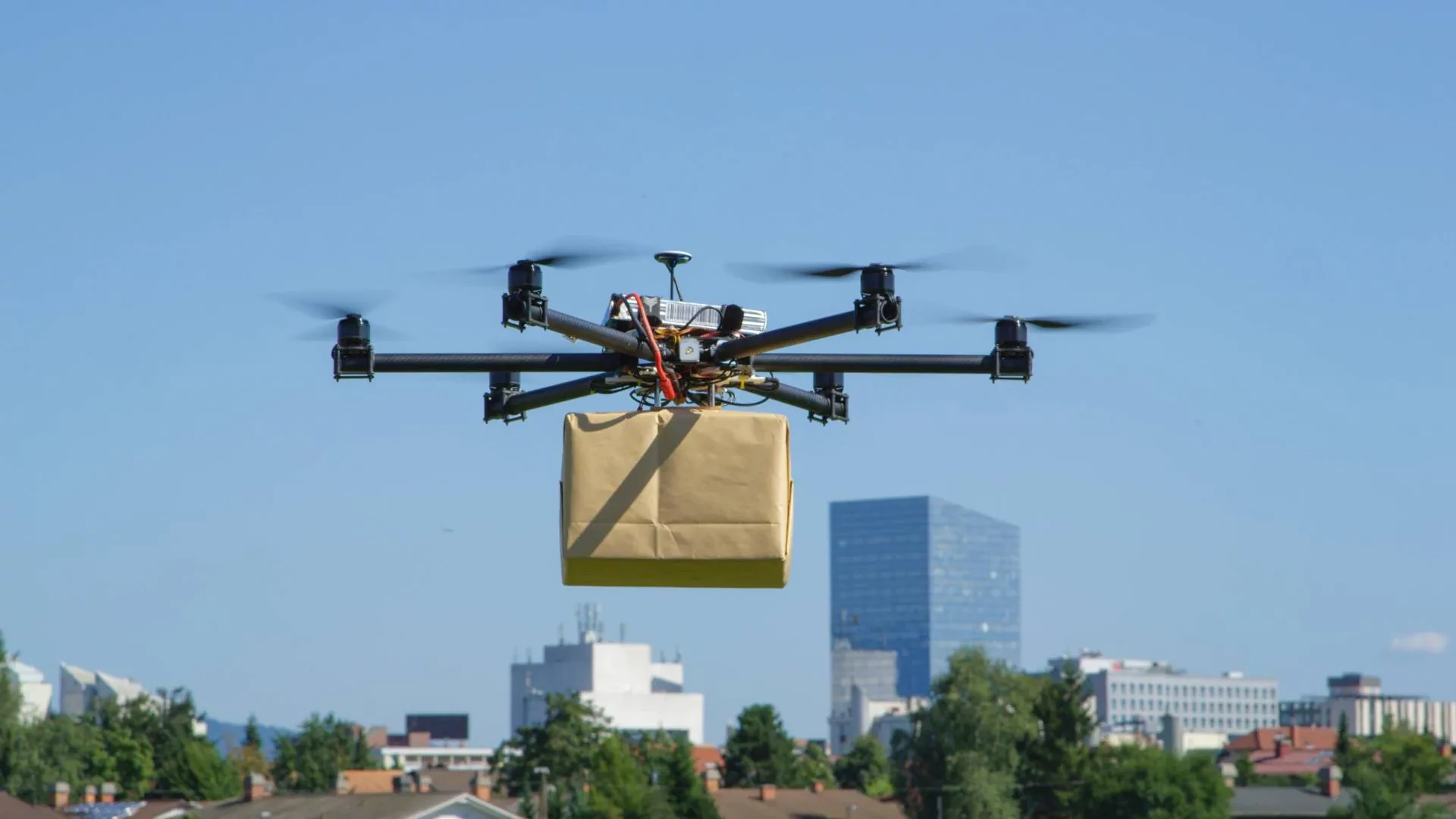19 Tips to Help Extend the Lifespan of Your Drone Battery

ENOV High-Energy drone batteries power industrial and commercial drones. Delivering 220–320 Wh/kg energy density, they enable long flight times (30+ mins) and support fast charging (2C). Perfect for aerial photography, surveillance, and delivery drones.
Drone batteries are the core power source for flight, and their lifespan directly affects usage costs and flight safety. By mastering the correct methods of charging, discharging, storing, and maintaining, you can significantly extend their service life. Here are the specific practices:
I. Correct Charging: Avoid Damaging the Battery Core
1. Use the original charger
Batteries of different brands have different voltages and protection mechanisms. Non-original chargers may cause the battery to bulge or overheat due to mismatched current/voltage. For example, batteries from brands like DJI and Potensic are best used with their own chargers. Batteries from B-end suppliers such as Enovbattery are equipped with matching chargers, and if needed, you can purchase the matching ones from the suppliers.
2. Do not overcharge
Once the battery is fully charged (when the indicator light turns green or shows 100%), unplug the charger immediately and do not leave it plugged in. Long-term full-charge charging will accelerate battery aging and even pose safety risks.
3. Minimize the use of fast charging
Although fast charging is convenient, it causes the battery to generate more heat and accelerates internal aging. Daily, try to use “slow charging” (for example, a 1000mAh battery with a 1A current), and only use fast charging in emergency situations.
4. Pay more attention during charging
When charging, place the battery in a well-ventilated and non-flammable place (such as a desktop, not in a drawer), and do not go far away to avoid accidents caused by charger failures.
5. Perform balanced charging regularly
Most drone batteries are composed of multiple cells. Regularly use a charger that supports “balanced charging” to make the power of each cell consistent, avoiding overcharging or undercharging of some cells.
II. Reasonable Discharging: Do Not Drain the Battery Completely
1. Charge when the remaining power is 20%-30%
Continuing to use the battery when its power is below 20% will damage the internal structure, which is called “deep discharge”. When flying, return when the remaining power is about 30%, and do not wait for the drone to automatically force a landing.
2. Do not fly too "violently"
Fierce operations such as sudden acceleration, vertical ascent, and high-speed dive will cause the battery’s power consumption to surge instantly and accelerate aging. Try to fly smoothly and reduce sudden power demands.
3. Power off in time after landing
After the drone lands, unplug the battery as soon as possible to prevent the battery from slowly losing power in the on state, resulting in low power.
III. Scientific Storage: "Maintain" the Battery Well Even When Not in Use for a Long Time
1. Keep the power at 50%-60%
When not in use for a long time (more than 1 week), do not store it at full power, as this will accelerate aging; nor store it with empty power, as this will “starve” the battery. The best state is to have about half of the power remaining, for example, each cell’s voltage is kept at around 3.8V (some drones have a “storage mode” that can automatically adjust).
2. Store in a cool and dry place
Keep away from extreme temperature environments such as direct sunlight, heaters, and refrigerators. The ideal temperature is 10-25℃. You can use a sealed bag, but do not seal it completely, leave a little ventilation to prevent moisture.
3. "Activate" the battery regularly
Even if not in use for a long time, charge and discharge a little every 2-3 months, such as charging from 50% to 60%, then flying to 40%, to avoid performance degradation after the battery “hibernates”.
4. Keep away from metals and heavy objects
Do not place it with metal objects such as keys and coins to prevent short circuits; nor put heavy objects on it to avoid deformation of the battery shell.
IV. Pay Attention to the Usage Environment: Reduce External Damage to the Battery
1. Avoid extreme temperatures
Low temperature (below 0℃): Before flying, put the battery in your pocket to warm it up to about 20℃, otherwise the power will drop sharply.
High temperature (above 40℃): The battery will get hot after flying. Do not charge it immediately, and wait until it cools to room temperature (about 20-30 minutes) before charging.
2. Do not fly in harsh environments
Strong winds and high-altitude areas will make the drone work harder and consume power faster; rainy and humid weather may affect the battery circuit. Try to choose a place with gentle wind, sunny weather, and low altitude.
3. Reduce extra weight
Do not hang too many unnecessary accessories on the drone (such as extra cameras, decorations). The heavier the weight, the greater the battery burden and the faster the power consumption.
V. Daily Maintenance: Detect Problems in Time
1. Check the appearance before and after each flight
Check if the battery is bulging (shell protruding), leaking (with viscous liquid), or damaged (internal cells exposed). Do not use it if these situations occur, and scrap it directly. Bulging batteries have explosion risks.
2. Clean the charging interface
When the interface is dusty or oxidized (turning black or rusty), wipe it clean with a cotton swab dipped in alcohol to ensure smooth charging and power supply.
3. Record the number of uses
Ordinary drone batteries can be charged and discharged about 300-500 times. Pay attention when the number is approaching: if the flight time is significantly shortened, for example, it could originally fly for 20 minutes but now only 10 minutes, it is time to replace the battery.
4. Do not mix old and new batteries
Using batteries with different aging degrees together will lead to uneven power consumption and accelerate wear. Try to use batteries from the same batch with similar conditions.
Summary
The core of extending the lifespan of a drone battery is to avoid overcharging, not draining it completely, keeping it away from extreme temperatures, storing it at half power, and checking the status regularly. Doing these well can not only save money but also make the flight safer!
Quick inquiry
Drop us a line, and we’ll get back to you within 24 hours.

Ariana Yuan
Digital Operations Manager
Website Planning|Marketing Project Management for Drone Batteries|Scheduled Content Refresh|SEO Optimization

Ariana Yuan
Digital Operations Manager
Website Planning|Marketing Project Management for Drone Batteries|Scheduled Content Refresh|SEO Optimization




